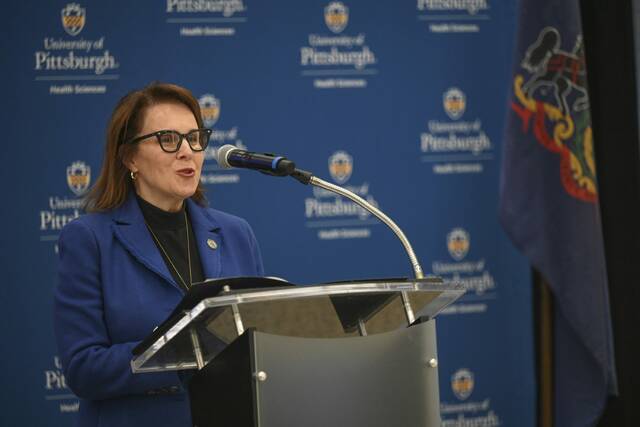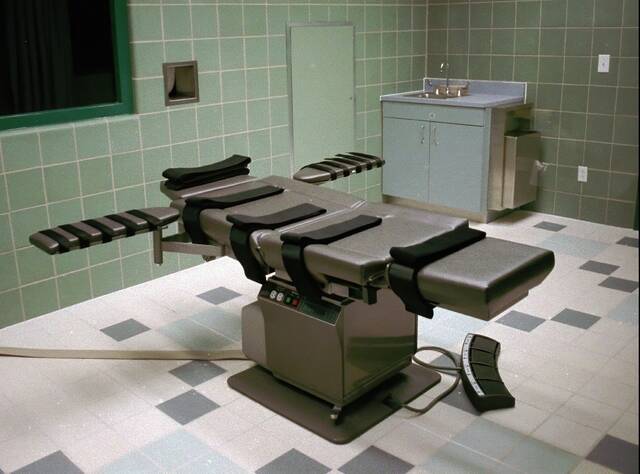More than 200 federal employees who work at the Bruceton Research Center, a research facility south of Pittsburgh, will lose their jobs by June 30, they were told this week.
They work at the Pittsburgh Mining Research Division of the National Institute for Occupational Safety and Health, part of the Centers for Disease Control and Prevention. The CDC is among the agencies supervised by the U.S. Department of Health and Human Services that is led by Robert F. Kennedy Jr.
The cuts are part of an overhaul of the American bureaucracy promised by President Donald Trump that’s being led in part by Elon Musk, the wealthiest person in the world.
We are streamlining HHS to make our agency more efficient and more effective. We will eliminate an entire alphabet soup of departments, while preserving their core functions by merging them into a new organization called the Administration for a Healthy America or AHA. This… pic.twitter.com/BlQWUpK3u7
— Secretary Kennedy (@SecKennedy) March 27, 2025
Suzanne Alison, 38, of Whitehall is an analyst who works behind the scenes at the Bruceton Research Center.
Located along Cochran Mill Road, it straddles the border of South Park and Pleasant Hills. Mine safety tests are done there, along with respirator testing and approvals for other personal protective equipment and other research.
“This facility is one of a kind,” Alison said.
It has proved its worth as the world has weathered several disease outbreaks, most recently covid-19, and prior to that ebola, that required use of N-95 respirators as a precaution.
N-95s are certified at the facility, Alison said.
“All of that stuff is done in Pittsburgh,” she said.
Alison has worked there for 12 years and is a union steward for the American Federation of Government Employees Local 1915.
Rep. Lee decries move
U.S. Rep. Summer Lee, D-Swissvale, said she knows the value of the work done at the Bruceton Research center.
“These layoffs are a direct attack on workers, on public health, and on the basic right of every person to come home safely to their family after a hard day’s work,” Lee said in a statement issued Tuesday. “The research done at NIOSH doesn’t just live in a lab — it’s what ensures that the nurse caring for patients, the steelworker on the line, or the factory worker exposed to fine particulates can breathe safely and go home to their families. That is worth fighting for. That is worth funding.”
‘The revolution begins today!’
The cuts in the region were part of what the Associated Press called a mass firing of HHS workers Tuesday.
Kennedy posted videos celebrating the swearing in of his two latest hires: Jay Bhattacharya, the National Institutes of Health director, and Martin Makary, the Food and Drug Administration commissioner.
It came hours after thousands of his employees began receiving emailed notices or were told to turn in their badges at HHS offices across the country.
“The revolution begins today!” Kennedy wrote in social media posts.
HHS hasn’t provided additional details or comments about Tuesday’s mass firings, the AP reported.
Kennedy has branded his effort to remake HHS as a way to “Make America Healthy Again.”
The HHS website touts contracts terminated since January.
Health spending expert: Uncertainty reigns
Expect more cuts and expect them to have long-term side effects, said Gerard Anderson, a professor at Johns Hopkins University in Baltimore who specializes in public health care spending.
As of yet, the HHS cuts haven’t been to its costliest programs: Medicaid, health care for poor people and those with disabilities; and Medicare, health care for retirees. Those programs have long been sacrosanct, but cuts would have to be made to them if the Trump administration holds firm to its move to drastically decrease spending to offset promised tax cuts.
“The first thing to know is where the big dollars are haven’t been touched yet,” Anderson said. “We expect to see fairly dramatic cuts in Medicaid.”
The lesser cuts put into place are spotlighted by the Bruceton Research Center cuts. They also include NIH funding cuts that have slowed research at the University of Pittsburgh and Carnegie Mellon University and caused those institutions to exercise what they’ve called fiscal prudence.
“Uncertainty” is the watchword, Anderson said, and a big thing that’s lost is time.
FDA cuts mean it takes longer for new drugs and treatments for diseases to gain approval.
NIH cuts mean research into new treatments stops.
CDC cuts mean the country is less prepared to fight events like measles outbreaks, which have been reported across the country this year. 2025 also marks five years since the covid-19 pandemic made public health a political pawn.
The harm can be long-lasting, Anderson said, as universities admit fewer post-graduate research fellows because of the uncertainties. Those same researchers are the professors of years to come, so the impact could be far-reaching, Anderson said.
“You lose the next generation of researchers,” Anderson said.








